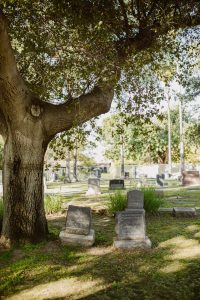Understanding the Burial Plot Cost: A Family’s Guide

Navigating the intricacies of burial plot cost can be challenging for families during an emotionally taxing time. Understanding the various factors that influence these costs, along with the different types of available burial plots, is essential for making informed decisions. This guide aims to provide families with a comprehensive overview of the average burial plot costs by region and additional expenses that may arise, empowering them to budget effectively and alleviate some of the financial burdens associated with burial arrangements.
- Factors That Influence Burial Plot Costs
- Types of Burial Plots Available
- Average Cost of Burial Plots by Region
- Additional Expenses Related to Burial Plots
- Tips for Families in Budgeting for Burial Costs
- Frequently Asked Questions
- What factors influence the cost of a burial plot?
- Are there additional fees associated with purchasing a burial plot?
- Can burial plots be purchased in advance, and what are the benefits of doing so?
- What should families consider when selecting a burial plot?
Factors That Influence Burial Plot Costs
Understanding the burial plot cost involves considering several key factors that can affect the price. Here are some primary influences:
- Location: Urban areas typically feature higher burial plot costs than rural regions. The land’s demand and local regulations significantly impact this pricing.
- Plot Type: Different types of plots (e.g., single, companion, or family plots) come with varying costs. Expect to pay more for larger or more prestigious plots.
- Cemetery Reputation: Established cemeteries often charge more due to their maintained grounds and additional services.
- Amenities and Services: Some cemeteries offer packages that include services like markers or headstones, potentially increasing the burial plot cost.
- Market Trends: Changes in local real estate and funeral industry trends can affect pricing, similar to any other property market.
By being aware of these factors, families can make informed decisions and better budget for the burial plot cost during a challenging time.

Types of Burial Plots Available
When considering burial plot costs, it’s essential to understand the various types of burial plots available. Each type comes with its own advantages and costs. Below, we explore the most common options:
- Traditional Burial Plot: This is the most common type, typically designed for standard casket burials. Expect higher costs due to land and maintenance fees.
- Cremation Plot: Smaller and often more affordable than traditional plots, cremation plots accommodate urns. They usually cost less, reflecting lower demand for space.
- Green Burial Plot: For environmentally conscious families, these plots offer a natural approach. They usually have a lower burial plot cost as they require minimal maintenance and no chemicals.
- Mausoleum Space: Above-ground entombment can lead to significantly higher burial plot costs due to construction and maintenance.
- Family Plot: A designated area for multiple family members can be more economical long-term, though the upfront cost might be higher.
Understanding these options allows families to make informed decisions that fit their needs and budgets related to burial plot costs.
Average Cost of Burial Plots by Region
Understanding the burial plot cost varies significantly across different regions. Here’s a breakdown to help families plan their budgets effectively:
| Region | Average Burial Plot Cost |
|---|---|
| Northeast | $4,000 – $7,000 |
| Midwest | $2,500 – $5,000 |
| South | $3,000 – $6,000 |
| West | $5,000 – $10,000 |
When evaluating the burial plot cost, consider the following factors that may impact pricing:
- Local Demand: Some areas experience higher demand for burial plots, leading to increased prices.
- Cemetery Type: Private cemeteries generally charge more than public or municipal ones.
- Plot Location: Plots in prime locations, such as near memorial areas, usually come at a premium.
Additionally, region-specific cultural practices can influence the burial plot cost. Therefore, families should research their local cemetery options and compare prices to make informed decisions.
Additional Expenses Related to Burial Plots
When planning for a burial, it’s crucial to consider not only the burial plot cost but also additional expenses that may arise. These costs can significantly impact your family’s budget. Here are some common additional expenses to keep in mind:
- Grave Marker or Headstone: Costs can vary greatly based on material and design, typically ranging from $1,000 to $3,000.
- Opening and Closing Fees: Cemeteries often charge a fee for digging and preparing the grave, usually between $500 and $2,000.
- Maintenance Fees: Some cemeteries require annual maintenance fees for plot upkeep, which can add an additional $150 to $500 each year.
- Casket Costs: The type of casket can greatly affect the overall cost, with prices generally ranging from $2,000 to $10,000.
- Transportation: Fees for transporting the deceased can average $300 to $1,200, depending on distance.
By comprehensively understanding these additional expenses, families can better prepare for the financial implications of burial and effectively budget for the overall burial plot cost.

Tips for Families in Budgeting for Burial Costs
Budgeting for burial costs can be overwhelming, but with strategic planning, families can manage expenses effectively. Here are essential tips to consider when budgeting for burial plot cost:
- Research Prices: Start by researching burial plot costs in your area. Prices can vary significantly based on location, so compare several cemeteries to find the best option.
- Create a Budget Plan: Outline all potential costs, including:
- Burial plot cost
- Funeral service costs
- Headstone expenses
- Additional fees (e.g., opening and closing of the grave)
- Consider Pre-Purchasing: If possible, purchase a burial plot in advance. This often locks in the current burial plot cost, saving families from potential future price increases.
- Explore Payment Plans: Many cemeteries offer payment plans for burial plots. This allows families to spread the burial plot cost over time, making it more manageable.
- Seek Assistance: Don’t hesitate to consult funeral homes or community organizations for resources and assistance. They may offer help in navigating costs associated with burial plots.
By following these tips, families can effectively budget for burial costs during a difficult time, ensuring they honor their loved ones without financial strain.
Frequently Asked Questions
What factors influence the cost of a burial plot?
The cost of a burial plot can vary significantly based on several factors. These include the location of the cemetery, the type of plot (single, double, or family plot), and the specific cemetery’s policies and reputation. Additionally, demand in certain areas can drive up prices. For instance, urban cemeteries often have higher prices due to limited space, while rural cemeteries may offer more affordable options. It’s essential to consider these factors when budgeting for a burial plot.
Are there additional fees associated with purchasing a burial plot?
Yes, when purchasing a burial plot, there are often additional fees that may apply. These can include costs for grave markers, opening and closing the grave, maintenance fees, and ongoing care of the plot. Additionally, if you choose to purchase a burial vault or casket, those costs will need to be factored into your overall expenses. It is crucial to ask the cemetery for a detailed breakdown of all potential fees before making a purchase.
Can burial plots be purchased in advance, and what are the benefits of doing so?
Yes, burial plots can typically be purchased in advance, and there are several benefits to doing so. Pre-purchasing a plot allows families to alleviate the stress and burden of making arrangements during an emotionally difficult time. It also provides an opportunity to ensure that loved ones are buried in a specific location that holds significance. Additionally, acquiring a plot in advance may lock in current prices, protecting against future price increases.
What should families consider when selecting a burial plot?
When selecting a burial plot, families should consider various factors to ensure their choice aligns with their needs and preferences. First, consider the location; proximity to family, ease of access, and the cemetery’s atmosphere are important. Additionally, assess the plot type—whether individual, companion, or family plots are needed. Furthermore, inquire about cemetery regulations, such as allowed memorialization options, maintenance policies, and any special services offered. Taking time to evaluate these aspects can lead to a more meaningful selection.





